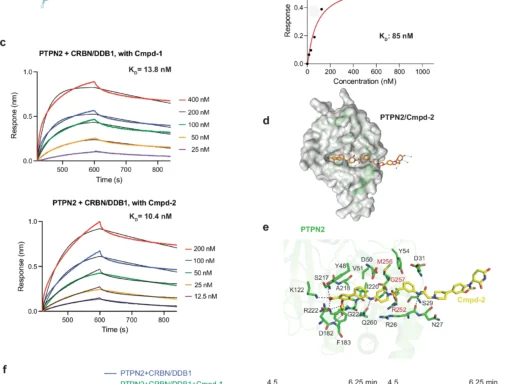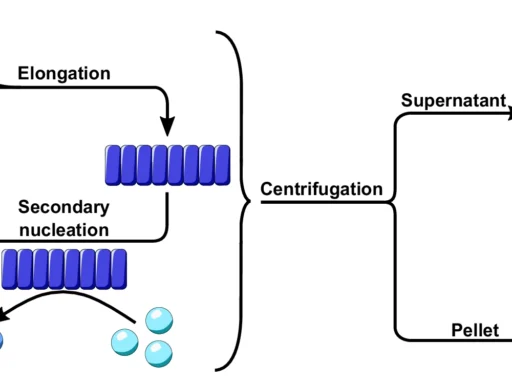Table of Contents
Overview of Deep eugenic solvents:
The field of green chemistry is rapidly advancing as scientists strive to develop sustainable and eco-friendly methods for chemical synthesis. In this domain, the use of catalysts is an essential element that can increase process efficiency while reducing the production of harmful byproducts. Due to their biological and industrial importance, scientists have created two types of chemicals: benzochromenopyrimidines and pyranopyrimidines. The synthesis of these heterocyclic compounds is of significant interest due to their diverse pharmacological effects.
An area of great potential in the field of green chemistry is the utilization of deep eutectic solvents (DES) as catalysts. Dual-functioning solvent catalysts Deep eugenic solvents (DES) have garnered interest for their capacity to serve as both solvents and catalysts, providing a more environmentally friendly option compared to conventional approaches. This article looks at whether DES (Deep Eutectic Solvents) could be used as a catalyst to make benzochromenopyrimidines and pyranopyrimidines. It focuses on the benefits, difficulties, and future possibilities of using this method.

Deep eugenic solvents (DES) are utilized as environmentally friendly catalysts:
Deep eutectic solvents (DES) are a type of solvent that consists of a mixture of two or more compounds that form an eutectic mixture, which is a mixture with a lower melting point than any of its individual components. Deep eugenic solvents DES possesses distinct characteristics and serves as a substitute for conventional organic solvents.
Different types of ionic liquids are called deep eutectic solvents (DES). They have at least two parts, usually a hydrogen bond donor (HBD) and a hydrogen bond acceptor (HBA).
The combination of these components results in the creation of an eutectic mixture, which has a melting point that is considerably lower than that of the separate components. Diphenyl ether sulfides Deep eugenic solvents (DES) have attracted considerable interest as environmentally friendly solvents because of their low toxicity, natural breakdown ability, and straightforward synthesis process.
The Benefits of Using Deep eugenic solvents (DES) in Organic Reactions:
The distinctive characteristics of DES make them well-suited for application in organic synthesis. Compared to conventional organic solvents, they offer numerous benefits.
Affordability and Accessibility: It is often cost-effective to produce Deep eugenic solvents DES using readily available materials.
Environmental Sustainability: Deep eugenic solvents DES possess the qualities of being non-volatile, non-toxic, and biodegradable, which makes them a favorable option for the environment.
Versatility: Deep eugenic solvents DES exhibit the ability to dissolve a diverse array of organic and inorganic substances, thereby enabling a multitude of chemical processes.
Dichloromethane Deep eugenic solvents (DES) versus conventional solvents:
Deep eugenic solvents DES is a more environmentally friendly option than conventional organic solvents because they help reduce the negative impact of chemical processes on the environment. Conventional solvents frequently contain hazardous and easily evaporating organic compounds (VOCs), which contribute to environmental pollution and pose health risks. On the other hand, Deep eugenic solvents DES offer a more secure and environmentally friendly alternative, in line with the principles of green chemistry.
Benzochromenopyrimidines Synthesis:
Characteristics and Uses of Benzochromenopyrimidines:
Benzochromenopyrimidines are heterocyclic compounds made up of a benzene ring, a chromene moiety, and a pyrimidine ring that are fused together. These chemicals are highly intriguing because of their wide range of biological actions, which encompass anti-inflammatory, anticancer, and antibacterial capabilities.
Conventional methods of synthesis:
The conventional method for synthesizing benzochromenopyrimidines often requires a series of sequential processes, rigorous operating conditions, and the utilization of hazardous chemicals. These techniques can consume a significant amount of time and have negative impacts on the environment, which highlights the need for the creation of more efficient and ecologically friendly alternatives.
DES plays a key role in the production of benzochromenopyrimidines:
Diazonium salts have emerged as a suitable catalyst for benzochromenopyrimidine production. DES, by functioning as both a solvent and a catalyst, can optimize the reaction process, decrease reaction durations, and improve yields. Utilizing Deep eugenic solvents DES in this synthesis not only streamlines the method, but it also adheres to the principles of green chemistry by reducing the use of hazardous chemicals and solvents.
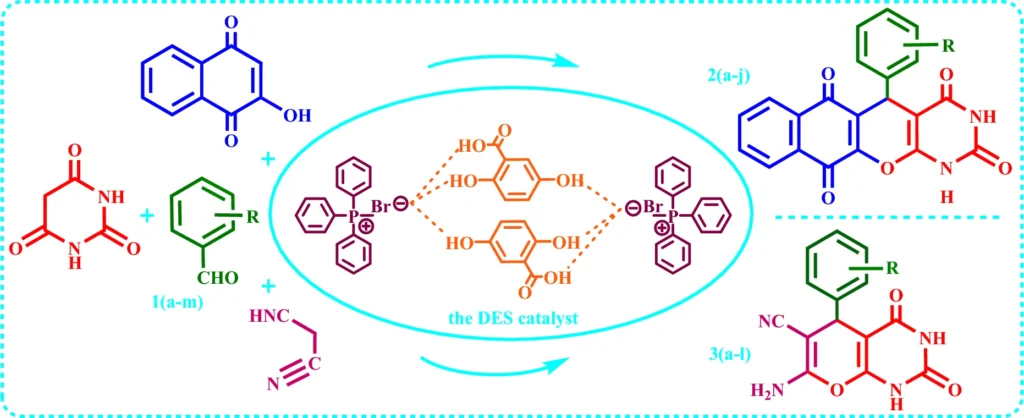
Pyranopyrimidines Synthesis:
Characteristics and Uses of Pyranopyrimidines:
Benzochromenopyrimidines, a type of heterocyclic chemical, are known for their significant biological properties. A pyran moiety joins the pyrimidine ring in these compounds. They have demonstrated promise in a variety of pharmacological applications, such as being effective against viruses and cancer.
Conventional Synthesis Techniques:
Typically, we synthesize pyranopyrimidines, like benzochromenopyrimidines, using intricate, multi-step processes that frequently require the use of severe conditions and toxic substances. These problems emphasize the necessity for further sustainable and efficient synthetic methodologies.
DES plays a role in the production of pyranopyrimidines:
Diazonium salts (DES) have also demonstrated efficacy as catalysts for the synthesis of pyranopyrimidines. Due to their capacity to expedite reactions at lower temperatures and in less time, they are a desirable choice for environmentally friendly synthesis. Through the use of DES, chemists can achieve higher yields with fewer byproducts, making the process more sustainable and economically efficient.
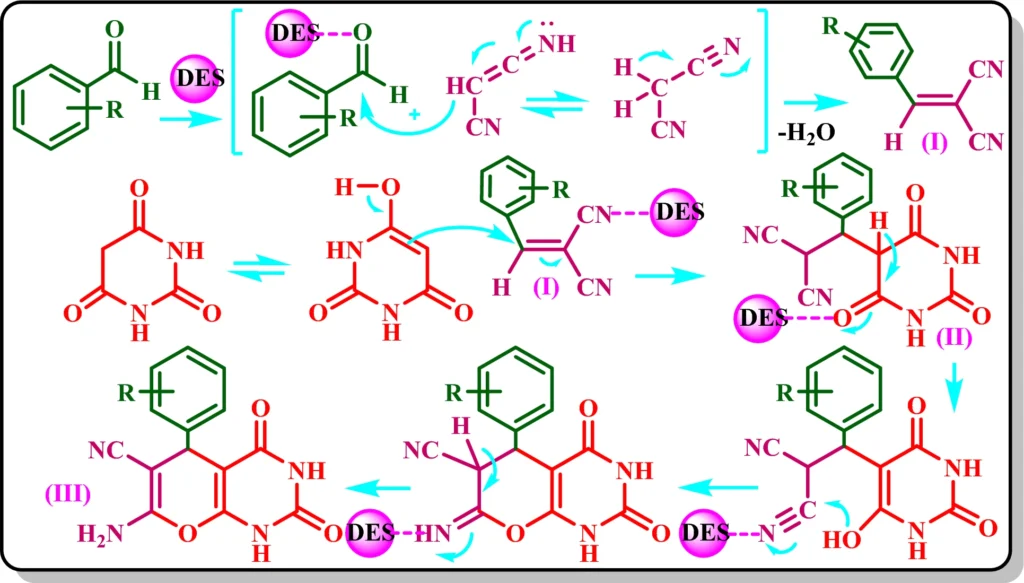
Understanding the mechanisms of DES-catalyzed reactions:
We still don’t fully understand the mechanism by which DES catalyzes the reaction.
In these processes, the primary role of Deep eugenic solvents DES is to stabilize transition states and intermediates by forming hydrogen bonds. This stability reduces the amount of energy needed to start the reaction, enabling it to happen more quickly and under less extreme conditions. Furthermore, the ionic nature of Deep eugenic solvents DES may increase reactant solubility, thereby improving reaction efficiency.
Comparative analysis of catalysts:
Compared to conventional catalysts like metal salts or acids, DES (Deep Eutectic Solvents) provide several benefits, such as less toxicity, simplified recycling, and a diminished environmental footprint. Unlike other catalysts that require extensive purification procedures and generate dangerous waste, DES allows for multiple reuses with minimal reduction in effectiveness.
Environmental Impact and Efficiency:
Utilizing Deep eugenic solvents DES not only reduces toxicity but also provides additional environmental advantages. Dicarboxylic acid esters (DES) can undergo biodegradation and be produced from renewable sources, making them an environmentally sustainable option for organic synthesis. Furthermore, the notable efficacy of DES-catalyzed processes frequently results in decreased energy usage and lower overall expenses.
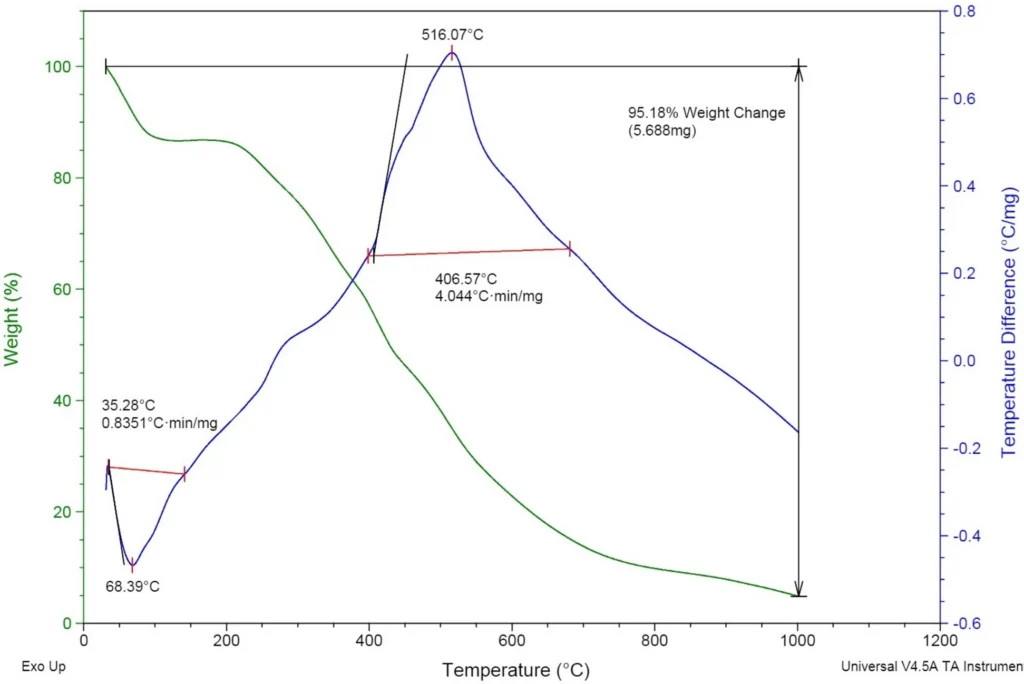
The analysis focuses on specific instances and empirical findings:
Researchers have recently studied the use of DES (Deep Eutectic Solvents) in the synthesis of benzochromenopyrimidine compounds.
Recent research has shown that DES is successful in synthesizing benzochromenopyrimidines. One research showed that choline chloride-based deep eutectic solvents (DES) can be used to make large amounts of benzochromenopyrimidines in mild conditions. In comparison to conventional approaches, the study emphasized the efficacy of DES in substantially decreasing reaction times.
Researchers have recently studied the use of DES (Deep Eutectic Solvents) in the synthesis of pyranopyrimidines.
Research on pyranopyrimidine synthesis has demonstrated that DES is a highly efficient catalyst for these reactions, leading to the production of pure products with minimal unwanted substances. The use of Deep eugenic solvents DES in these investigations not only improved reaction efficiency but also adhered to the principles of green chemistry by reducing the need for perilous reagents.
Important discoveries and their consequences:
The main findings from these investigations emphasize DES’s capability as a facilitator in the environmentally friendly production of intricate organic substances. Deep eugenic solvents DES has the potential to provide quicker responses and more productivity, which could lead to the development of more environmentally friendly and effective chemical procedures, especially in the pharmaceutical and chemical sectors.
Advantages of Using DES in Synthesis:
The heightened response rates are an important benefit of using Deep eugenic solvents DES in synthesis. The distinctive characteristics of DES, such as their capacity to stabilize transition states, enable reactions to occur more rapidly, resulting in time and energy savings.
Increased crop production:
Reactions catalyzed by DES frequently give higher quantities compared to conventional techniques. Maximizing yield is critical in the pharmaceutical sector because it has the potential to save a significant amount of money while reducing the need for thorough purification.
Advantages for the Environment:
The environmental advantages of DES are significant. By substituting harmful and unstable organic solvents, DES helps reduce the environmental impact of chemical processes. Due to their capacity to decompose naturally and their lack of harmful properties, they play a crucial role in shifting towards more environmentally friendly industrial methods.
Economic efficiency:
DES is both ecologically sustainable and economically efficient. Due to their cost-effective manufacture and the capacity to recycle them several times, they serve as a financially feasible substitute for conventional catalysts and solvents.
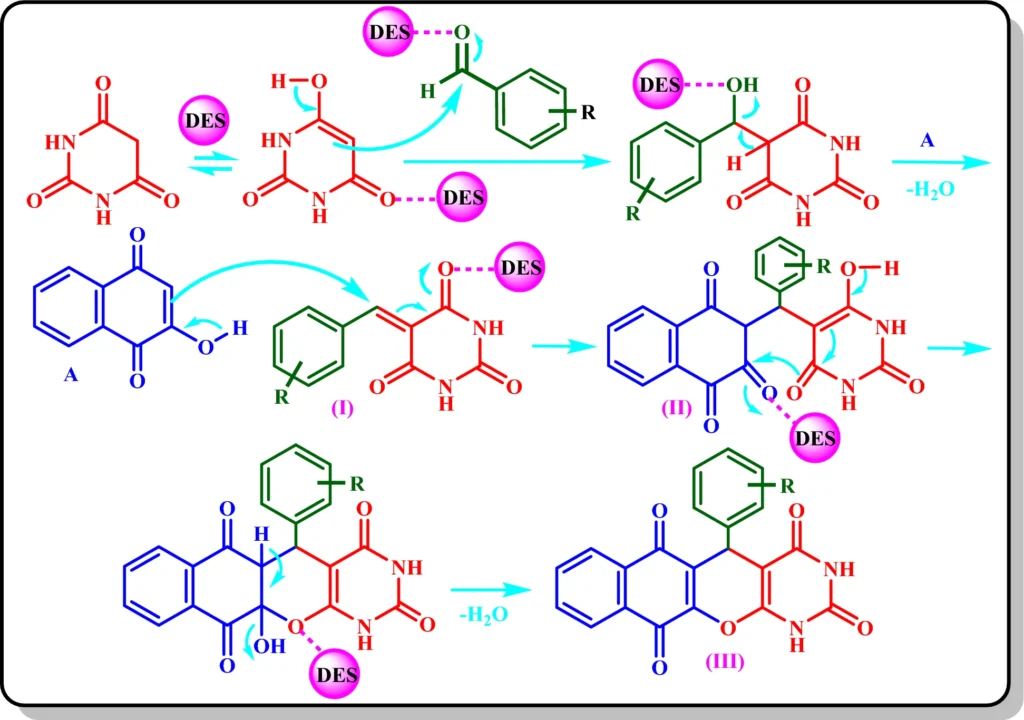
Obstacles and Constraints:
Employing DES has limitations:
Although DES has numerous benefits, it nonetheless faces certain obstacles. Certain Deep eugenic solvents DES may exhibit constraints in their thermal stability or their ability to successfully catalyze a wide range of reactions. Furthermore, the viscosity of certain DES can make handling and blending difficult.
Conquering the Obstacles:
Scientists are currently working to address these issues by developing novel forms of DES with enhanced characteristics. For instance, adjusting the composition of DES can improve their resistance to heat or decrease their thickness, making them more appropriate for a wider variety of uses.
Prospects for Future Research:
We expect subsequent studies to focus on expanding the use of DES in organic synthesis, particularly in developing new DES compositions tailored to specific chemical processes. Also, more research is needed to fully understand how DES speeds up reactions, which could lead to the discovery of better catalytic methods.
Practical Uses of DES-Catalyzed Syntheses in Industry:
Industrial applications, particularly in the production of medicines and specialty chemicals, are increasingly adopting DES. DES provides a more environmentally friendly option compared to conventional solvents and catalysts, in line with the industry’s objectives of minimizing environmental harm and enhancing process effectiveness.
Applications in the field of pharmaceuticals:
In the pharmaceutical sector, the rapid and efficient synthesis of intricate compounds such as benzochromenopyrimidines and pyranopyrimidines is of utmost importance. DES-catalyzed technologies present a practical and effective alternative by delivering increased yields and purities while simultaneously reducing environmental impact.
Additional applications are possible:
DES-catalyzed syntheses could find applications not only in medicines but also in the manufacturing of agrochemicals, dyes, and materials research. DES possess a high degree of adaptability and offer significant ecological advantages, rendering them appropriate for a diverse array of industrial operations.
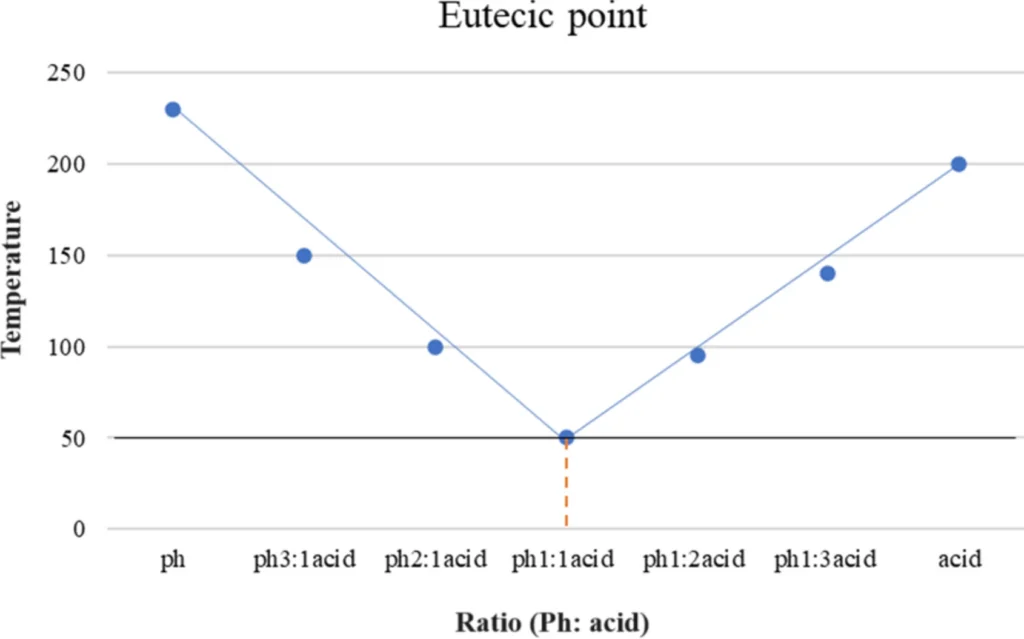
The future use of DES in organic synthesis holds significant potential:
The field of green chemistry is currently undergoing significant developments:
We anticipate a growing significance for deep eutectic solvents (DES) as green chemistry continues to develop. One emerging trend is the creation of bio-based DES, which has the potential to decrease the environmental effects of chemical processes and improve the sustainability of industrial activities.
There is potential for a broader range of applications:
DES has applications beyond the synthesis of benzochromenopyrimidines and pyranopyrimidines. It is possible to extend the application of DES to a wider variety of chemical reactions through continuous study, including those that now depend on less environmentally friendly catalysts and solvents.
The Synthesis of Benzochromenopyrimidines and Pyranopyrimidines: A Glimpse into the Future:
It is very important to keep looking into green chemistry methods, especially deep eutectic solvents (DES), in order to make progress on synthesizing benzochromenopyrimidines and pyranopyrimidines. By adopting DES as a catalyst, researchers can create more sustainable, efficient, and economical techniques for manufacturing these valuable chemicals.
In conclusion:
To sum up, deep eugenic solvents (DES) have a lot of potential as eco-friendly catalysts for making benzochromenopyrimidines and pyranopyrimidines quickly and effectively. Their distinctive characteristics provide notable benefits compared to conventional solvents and catalysts, such as improved reaction rates, increased yields, and less environmental impact. As the green chemistry area expands, we anticipate DES to significantly contribute to the advancement of sustainable chemical processes. Researchers and industries can actively contribute to a more sustainable future by adopting DES as a catalyst.
Frequently Asked Questions:
1). The main benefits of using DES in organic synthesis are as follows:
Dihydroxyethyl sulfide (DES) provides numerous advantages, such as reduced toxicity, biodegradability, and the dual role of being a solvent and catalyst, resulting in accelerated reactions and increased yields.
2). How does DES compare to other environmentally friendly catalysts?
Diazonium salts (DES) exhibit superior environmental compatibility and versatility in comparison to numerous conventional green catalysts, hence providing a wider array of potential uses and facilitating more convenient recycling.
3). Is DES suitable for large-scale industrial applications?
Indeed, DES (Deep Eutectic Solvents) are experiencing a growing adoption in industrial sectors, namely in the pharmaceutical and fine chemical industries. This is mostly due to their advantageous cost-effectiveness and environmental benefits.
4). What are the ecological consequences of utilizing DES?
Utilizing DES greatly diminishes the environmental impact of chemical processes by reducing the requirement for hazardous and volatile organic solvents and enhancing biodegradability.
5). Are there any limitations or restrictions on using DES in chemical reactions?
DES has certain limits, such as those related to heat stability and viscosity. However, ongoing research is actively working to overcome these obstacles in order to broaden their range of applications.
For more chemistry blogs, visit chemistry Master




